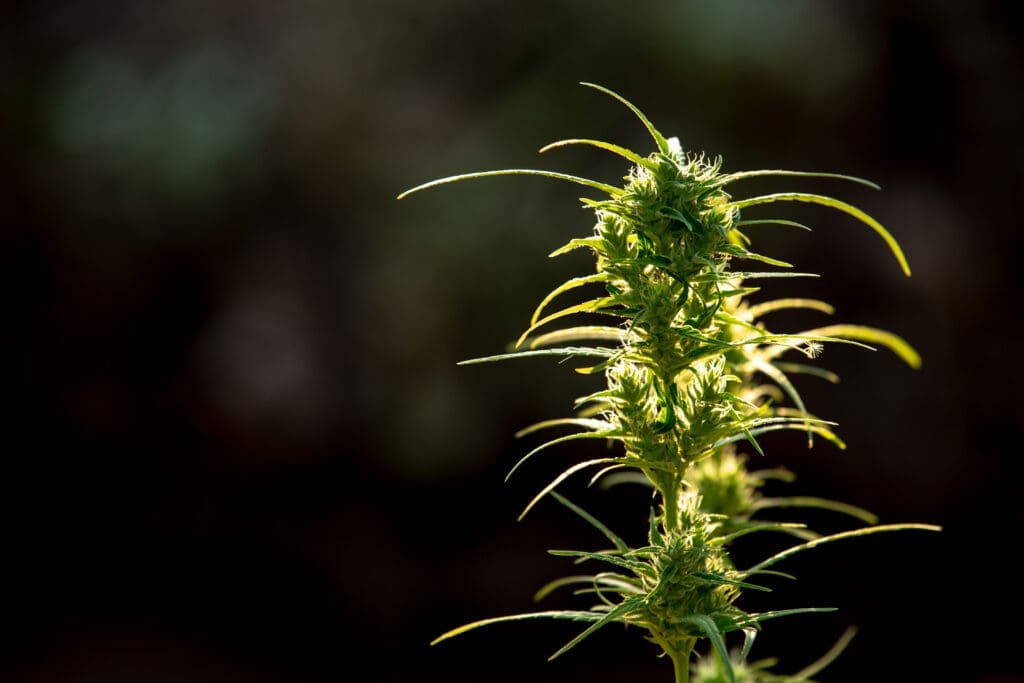
Cannabis indica
Latin name: Cannabis indica
Short name: Cann-i
Common name: Indian Hemp | Marijuana | Ganja | Hashish | Bhang
Primary miasm: Psoric Secondary miasm(s): Sycotic
Kingdom: Plants
Family: Cannabaceae
- Symptomatology
- Remedy Information
- Differentiation & Application
Prepared from the flowering tops of the female Cannabis sativa indica plant, rich in psychoactive resin (mainly Δ9-tetrahydrocannabinol). Used traditionally in spiritual, recreational, and medicinal contexts.
Widely used as a psychoactive drug for its mind-altering effects, as well as medicinally for pain relief, appetite stimulation, anxiety, seizures, and nausea.
First proved by Dr. A.C. Clifton; clinical experiences extensively documented by Hering, Allen, and Hale; effects also corroborated through observed intoxication cases.
- Mind – intense alterations in perception, time distortion, anxiety, mystical or detached states
- Nervous system – particularly brain, spinal cord, and sensory nerves
- Bladder and urinary tract – incontinence, urgency
- Eyes and vision – dilation, photophobia
- Sleep and dreams – vivid, colourful, ecstatic or anxious dreams
- Muscles – spasms, clumsiness, heaviness
- Sexual organs – heightened or distorted sensations
- Heart and circulation – palpitations, erratic pulse
- Quiet
- Lying on the back
- Solitude
- Deep breathing
- Cold air
- Avoiding conversation
- Mental exertion
- Talking
- Music
- Emotional excitement
- Company
- Alcohol
- After urination
- Lying on left side
- Agaricus – Twitching, incoordination, but more spasmodic and cold-sensitive
- Lachesis – Loquacious and excitable, but more outwardly aggressive and left-sided
- Nux moschata – Dreamy, spacey, with dryness and forgetfulness, but more hysterical
- Stramonium – Delirious, fearful, and nightmarish, but with violence and fear of darkness
- Opium – Narcosis, ecstasy, and suspended perception, but more in passive stupor
- Complementary: Phosphorus, Pulsatilla
- Antidotes: Nux vomica, Camphora
- Follows well: Belladonna, Hyoscyamus
- Precedes well: Sulphur
- Inimical: None noted
Cannabis indica embodies the exalted, scattered, and disembodied mind. It traverses ecstasy and fear, creating a dreamlike separation from reality. The keynotes are intense mental stimulation, distortion of time and space, and profound disconnection from the physical. It is a remedy of perception unmoored—where thoughts race, the heart thunders, and the body becomes foreign. Particularly suited to those with creative, nervous, or spiritual tendencies, who become overwhelmed by the very powers of their inner world.
- Excellent for anxiety with palpitations, especially after cannabis use
- Useful in urinary incontinence or hesitancy with emotional overlay
- Consider in insomnia with racing mind and vivid dreams
- Applicable to panic attacks with disorientation or depersonalisation
- Can assist in neuralgia, spasms, or weakness in limbs from nervous origin
Mind
- Delusions, body is expanding
- Thoughts vanish while speaking
- Ecstasy, alternating with anxiety
- Time seems long
Head
- Fullness, vertex
- Pulsation in brain
- Vertigo on movement
Urinary
- Involuntary urination when thinking of it
- Retention of urine from nervousness
- Burning before and after micturition
Extremities
- Trembling, hands
- Incoordination
- Numbness, crawling sensations
Generalities
- Worse from music, excitement, company
- Better from lying on back, solitude
- Sensation of floating or detachment
- T.F. Allen – Encyclopaedia of Pure Materia Medica: Complete proving data, mental and urinary symptoms
- C. Hering – Guiding Symptoms of Our Materia Medica: Focused on time distortion, detachment, and urinary phenomena
- John Henry Clarke – Dictionary of Practical Materia Medica: Provided depth on mental state, dream states, and perception
- William Boericke – Pocket Manual: Gave clinical keynote tips and mental/emotional core
- E.M. Hale – New Remedies: Supported analysis of cannabis intoxication and therapeutic analogies
